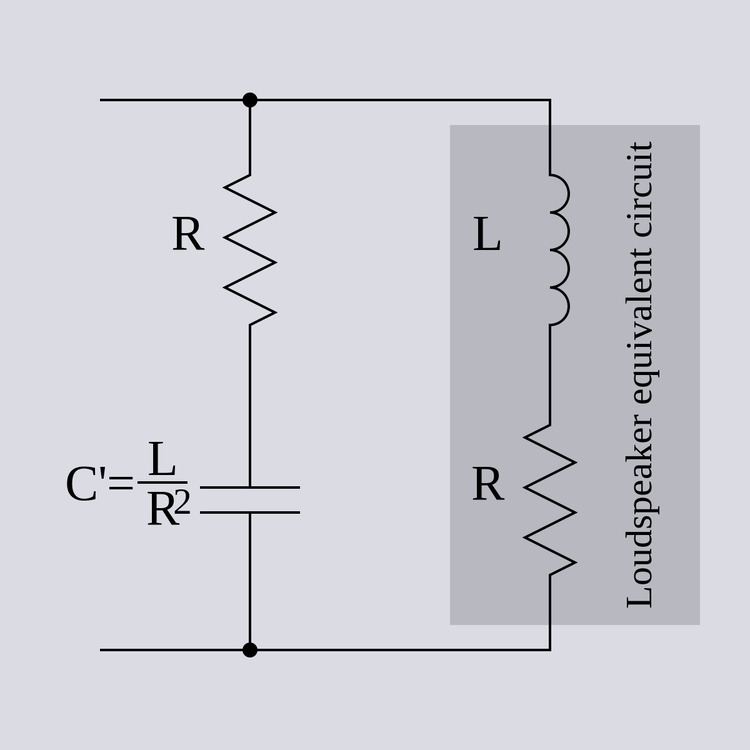 | ||
A Boucherot cell (or Zobel network) is an electronic filter, used in audio amplifiers to damp high frequency oscillations that might occur in the absence of loads at high frequencies. Named after Paul Boucherot a Boucherot cell typically consists of a resistor and capacitor in series, that is usually placed across a load, for stability.
It is commonly seen in analog power amplifiers at the output of the driver stage, just before the output inductor. The speaker coil inductance of a loudspeaker generates a rising impedance which is worsened by the output inductor generally found in analog power amplifiers; the cell is used to limit this impedance.
The documentation for some power operation amplifiers suggests the use of a "Boucherot cell between outputs and ground or across the load".
Additionally, Boucherot cells are sometimes used across the bass driver (and mid-range) of a speaker system, in order to maintain a more constant driving point impedance as "seen" by a passive crossover. In this specific arrangement, the Boucherot cell is sometimes also known as a Zobel network.
Some loudspeaker crossover designs aim to stabilize impedance at high frequencies by including Zobel networks.
